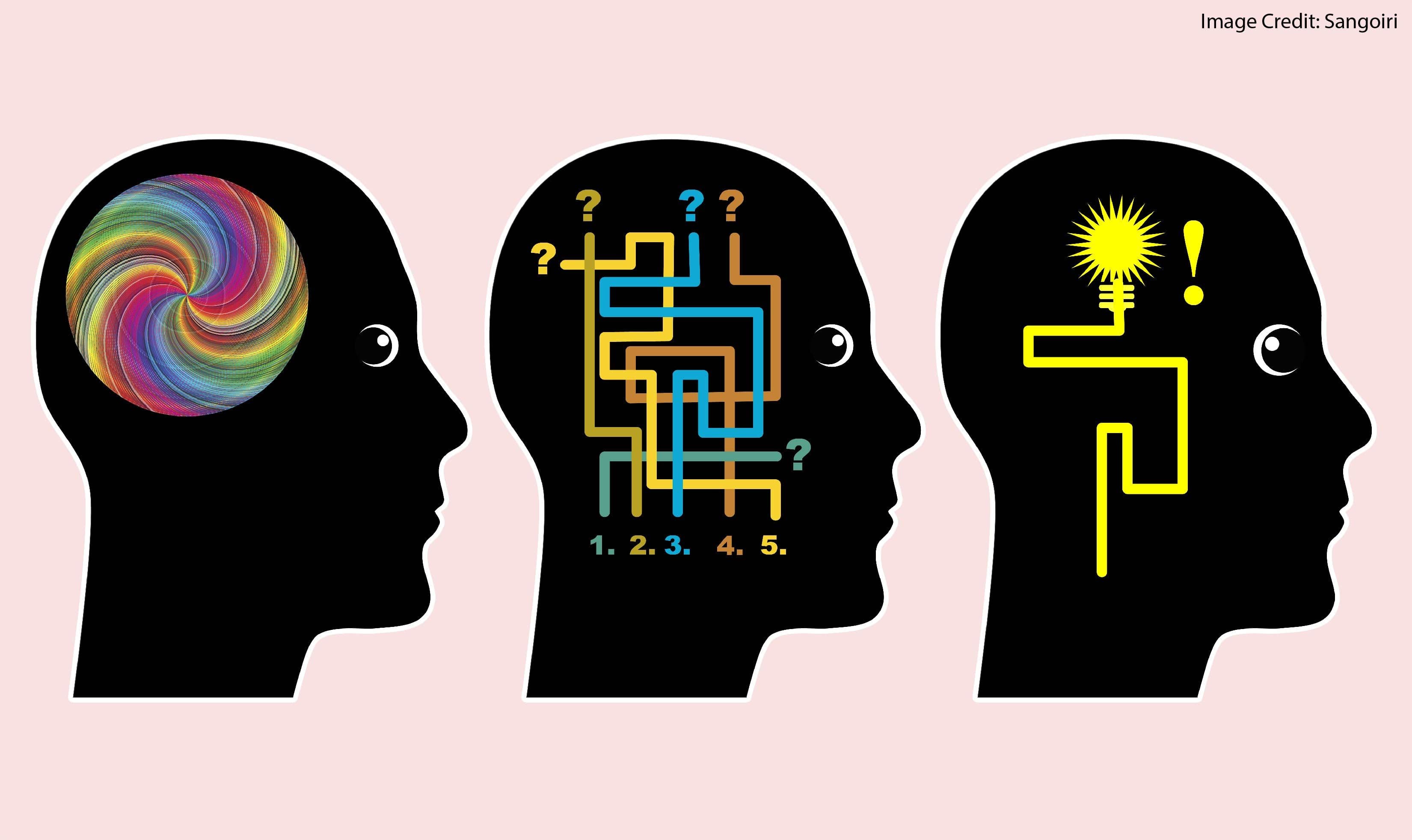
Want to Spend Less Time Studying? Find your learning style.
Identifying your learning style can make you more efficient with your SAT and ACT test prep, so you can focus on the subject matter and strategies that will raise your score.

You might have heard that people don’t learn things at the same time and in the same way, but how can you find out how you learn? Can figuring out how you learn make you learn faster and more efficiently? Make your SAT or ACT score go up? Well … maybe!
In the 1990s, a Kiwi (New Zealander) named Neil Flemming developed what he called the VARK Modalities to describe four learning styles: Visual, Auditory, Read/Write and Kinesthetic. Being a visual learner doesn’t mean that you cannot learn by listening to a podcast (auditory) or taking good notes (read/write), it just means that you have a dominant way of learning that is a bit more efficient than the other ways.
Lisa Speransky, IVY’s founder explains, “I love listening to audiobooks while jogging. I often listen to dense psychology books that quote lots of studies. An auditory learner would be able to remember an interesting finding by repeating it while running. I cannot. I remember the premise of the book, but all the visual stimuli around me distract me from the details. As a visual learner, I know that I need to stop and write some notes or even dictate a text to myself that I will review later. That is how I will recall the findings of the study I found so interesting in my audiobook. Does this mean that I don’t listen to audiobooks anymore? No. But I have developed a method for myself -- based on my learning style -- that brings me both joy and the result I want, which is being able to remember the studies I love reading about.”

Step 1: Which letter are you?
It might seem obvious but Visual/Graphic learners learn best through visuals and depictions, rather than words. When visual learners have compelling visuals, graphics, charts or manuals accompanying what they’re learning, they’re best able to comprehend, retain and concentrate on the information they're getting because they can see it.
Visual learners carefully observe their classes and tutoring sessions. They may doodle as a way to stay focused, or have other creative and artistic avenues because of their affinity for visuals. Above all, visual learners are excellent notetakers: organized, neat, and thorough, they like things displayed. Avid outliners, they plan out essays and projects ahead of time and have a system when taking notes involving symbols and color coordination to triage information (i.e question marks for confusing information; exclamation points for important information). Understanding charts and graphs is easy for them, and class handouts are golden resources.
Auditory learners learn through listening and speaking. In fact, auditory learners generally sort information as they talk through something they have just learned, whereas a common trait of the other styles is thinking and then speaking. Auditory learners are chatty and like discussion, are very present in class participation, ask lots of questions and are very curious, and like to hear clear instructions before starting any task. Their go-to tool is audio formats of anything: music, the radio, podcasts and learning videos, and their special skill is telling you about them afterwards.
Audio learners learn best from audio or video clips, lectures, and then a dialogue. They have incredible memories, and an affinity for music, lyrics or poetry and other spoken words. They may prefer oral presentations over written ones depending on their confidence, and can struggle with visuals, particularly graphs and diagrams. Being incredibly sensitive to sound, if auditory learners are going to hunker down to study it must be in a quiet space with very light music or none at all. However, they often follow up to debrief with someone to make sure they covered what they needed to in independent study. Because of this, they can be great teammates and do well through study groups!
Reading/Writing learners best process material that is text-based. These learners are fond of journaling and writing, devour books and articles, have a strong vocabulary and probably spend a lot of time researching new fun facts. Keeping very detailed notes and making study guides are their best study habits and are very likely quite organized through planning their days, written reminders and making checklists to stay on task.
While there's some overlap with Visual learners, the main difference is that Visual learners like graphics while Reading/Writing learners like words. They take exhaustive notes, need dead silence to work and love a combination of lecture, reading and clear instruction. They work very well on their own, and in fact, prefer to. Their superpower is being able explain things very well and conjure up resources from past readings, or doom scrolls.
Kinesthetic learners absorb more information through experiences and doing things in real life, on their own. They’re fond of acting things out, experiments, enjoy practicing new skills, and are likely very athletic and crafty. A bit restless they prefer hands-on learning and likely aren’t shy of practicing to understand and perfect a new skill, preferring turning learning into a game or a challenge that they can master.
The restlessness can be a Kinesthetic learner's biggest struggle to overcome. They wiggle, tap, bounce their feet...anything like that. But that physicality is also their biggest strength: they have an incredible muscle memory capacity; teach them something, they practice it once or twice, and then they've got it down. Therefore, combining instruction with an activity is crucial: fidgeting, highlighting, note-taking, worksheets, writing on the board, or doing an activity (laundry or shooting hoops!) while someone asks them study questions will help them retain and concentrate information.
You can find out your learning style very easily by completing this free, 2-minute VARK Questionnaire.
So...how does this relate to the SAT?
The SAT, in particular, is known to be a test that tricks and tires. It doesn’t test the highest level of math you’ve taken (no pre-calculus or calculus present), but rather asks you to interpret a word problem and figure out what algebraic equation will help you solve it in the short time you have for each question. Identifying your learning style can make you more efficient with your SAT and ACT test prep, so you can focus on the tools and tactics that maximize your learning and processing. It also means you can skip the tools that might work for others, but aren’t quite right for you.
Test prep tips by learning type
Armed with a Masters in Education and specializing in the college admissions process, tutor Michelle S. says: “In my experience, it is possible for kids of any learning level to succeed on the SAT with rigorous practice but the best tutors will know how to activate the student’s strengths.” Here are Michelle’s best tips!

Visual
- Highlighting, color-coordination (or color-coding) and neat notes are important methods of preparation and there are tons of videos out there for visual learners to watch for reinforcement. Keeping white spaces on notes (absolutely no notes in the margins) will help visual learners plow through their studying with ease.
- Flashcards are particularly great for memorizing a lot of information, like vocabulary or math and science terms.
- Demonstrations: concept isn't sticking, in Algebra for example, watch it being done through a demonstration.
- Recorded sessions and ‘how-to’ videos will help visual students tackle challenging math problems, and dissect reading and writing passages
- Create a consistent system of symbols for Reading Comprehension: question marks can mean you don't know, exclamation points can mean important information...and so on.
- Make a cheatsheet (or study guide) for Math equations; you can't actually take it to the test, but it'll help remind you on the day of the test which formulas you have in your mental tool kit.
Auditory
- Always rephrase what you were just taught in your own words to make sure it sticks.
- Record tutoring sessions to be able to play it back for review.
- Watch Khan Academy lectures and other how-to videos to revise troublesome maths sections.
- Reciting notes you’ve taken and listening to podcasts about the test could be helpful by making you feel ready and informed prior to test day.
- Create mnemonic devices: is PEMDAS your best friend when it comes to Algebra? Create others for other multi-step problems, or to remember facts.
- Study in a quiet place as sounds easily distract you!
Reading and writing
- Decrease your time on the Verbal section: vocabulary, reading and grammar are likely easy for you, so you can try cutting your time down to have more on the math section.
- Focus on SAT Math practice to counterbalance your ease in English.
- Turn graphs and diagrams into words: do you see a graph an panic? Talk it out to yourself. What's on the X-axis, what's on the Y-axis? Take notes on the test page with your own words.
- Practice problems (a lot of them!) and revising your mistakes are great tools to make sure math strategies are clicking.
- Written instructions or writing out steps to solving troublesome math problems may keep you from repeat-mistakes, particularly if particular kinds of questions (like Logic questions) are giving you grief.
- Make a checklist prior-to test day of what you’re still struggling with--and be proud when you check something off!
Kinesthetic
- Have all your strategies to problem-solve the test: do you know every concept being covered? Do you know how to annotate the reading section to cut time down? Which math problems are you struggling with, are they similar?
- Practice problems, practice tests--practice!
- 'Teach-back’ what you’ve learned: demonstrate to your tutor how you would work out problems on your own.
- Plan for a workout the day before the test so you release tension and energy that can distract you on test day.
- Stumped on a problem? Draw it out. You learn best from something you built, not something you see.
- Have an SAT-approved fidget tool, like an eraser on test day, or do a quick chair stretch after completing a section to help you stay focused. Do these seem embarrassing? Try clenching your fist for 5 seconds and then relaxing while doing the Reading Section.
Final thoughts
The VARK model is not the end-all-be-all. After all, we all learn and adapt and should not feel pigeonholed into a particular learning style forever. The learning styles model also doesn't account for the fact that how someone may like to learn (which the VARK quiz shows you) may not be how you learn best in practice, particularly since learners already have ingrained study habits that work well for them before learning about these styles.
But knowledge is power. Particularly if you are feeling like you’re feeling stuck when it comes to your current study strategies, having new study tips to try should be the ultimate goal of knowing your learning style.
Finally, when you’re exploring learning styles, you’re practicing metacognition, or thinking about your thinking process. This practice of being an active participant in your learning will definitely make you more confident in your strengths, help you identify your weaknesses quicker, and enable you to problem-solve your way through many challenges!

